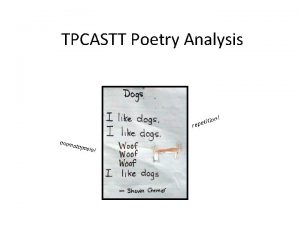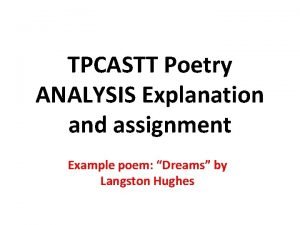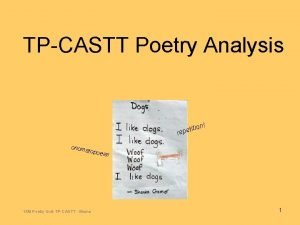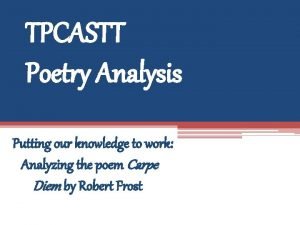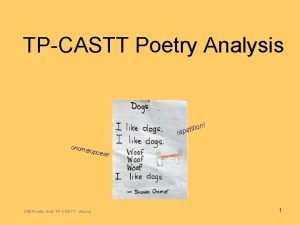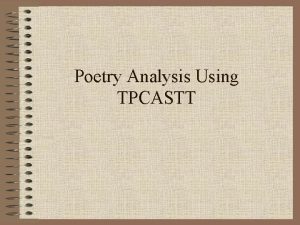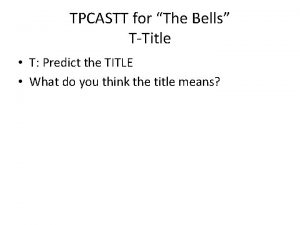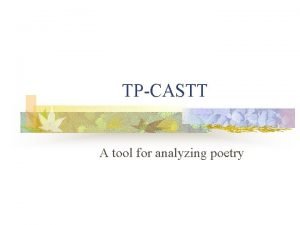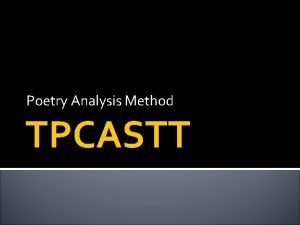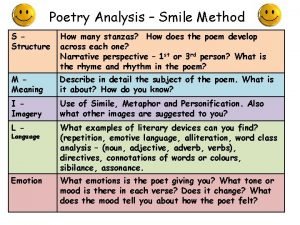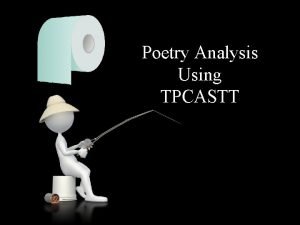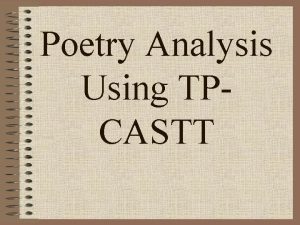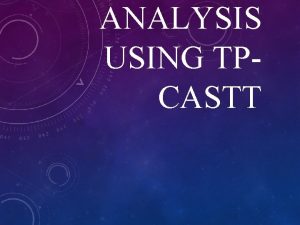TPCASTT Poetry Analysis Method TPCASTT A method for










- Slides: 10

TPCASTT Poetry Analysis Method

TPCASTT �A method for reading and analyzing poetry. � A TPCASTT reading takes you through seven specific steps so that you analyze the poem as thoroughly as possible.

Step 1: T is for TITLE � First, look at the TITLE of the poem and ask yourself these two questions: � “What does the TITLE of the poem mean? � “Based on the TITLE, what might the poem be about? ”

Step 2: P is for PARAPHRASE � After you read the poem, PARAPHRASE it by putting what you read into your own words. � When you PARAPHRASE a poem, you restate poem’s plot points.

Step 3: C is for CONNOTATION �CONNOTATION: n. the ideas or meanings associated with a word or suggested by it. � In order to complete this step, you find the literary devices used in the poem and their possible deeper meanings. � Some important literary devices to look for: � Imagery � Metaphors � Similes � Symbols � Personification

Step 4: A is for ATTITUDE � ATTITUDE addresses the speaker’s tone and word choice. � Ask yourself these questions in order to determine what the ATTITUDE of the speaker is: � “What is the speaker’s ATTITUDE toward the poem’s subject? ” � “Why does the speaker use certain words? ”

Step 5: S is for SHIFT � Poems typically SHIFT before the conclusion is reached. � Look for SHIFTs in the following areas: � Transition words � Punctuation � Stanza division � Changes in length (lines and/or stanzas) � Change in rhyme � Change in tone

Step 6: T is for TITLE � Return to thinking about the TITLE now that you have read analyzed the poem and ask yourself these questions: � “Has the TITLE’s meaning changed? ” � “What is the TITLE’s significance? ”

Step 7: T is for THEME � To complete this final step, read back through Steps 1 -6 and determine the central idea or insight of the poem.

Steps 1 -7: TPCASTT � T: Title � P: Paraphrase � C: Connotation � A: Attitude � S: Shift � T: Title � T: Theme
